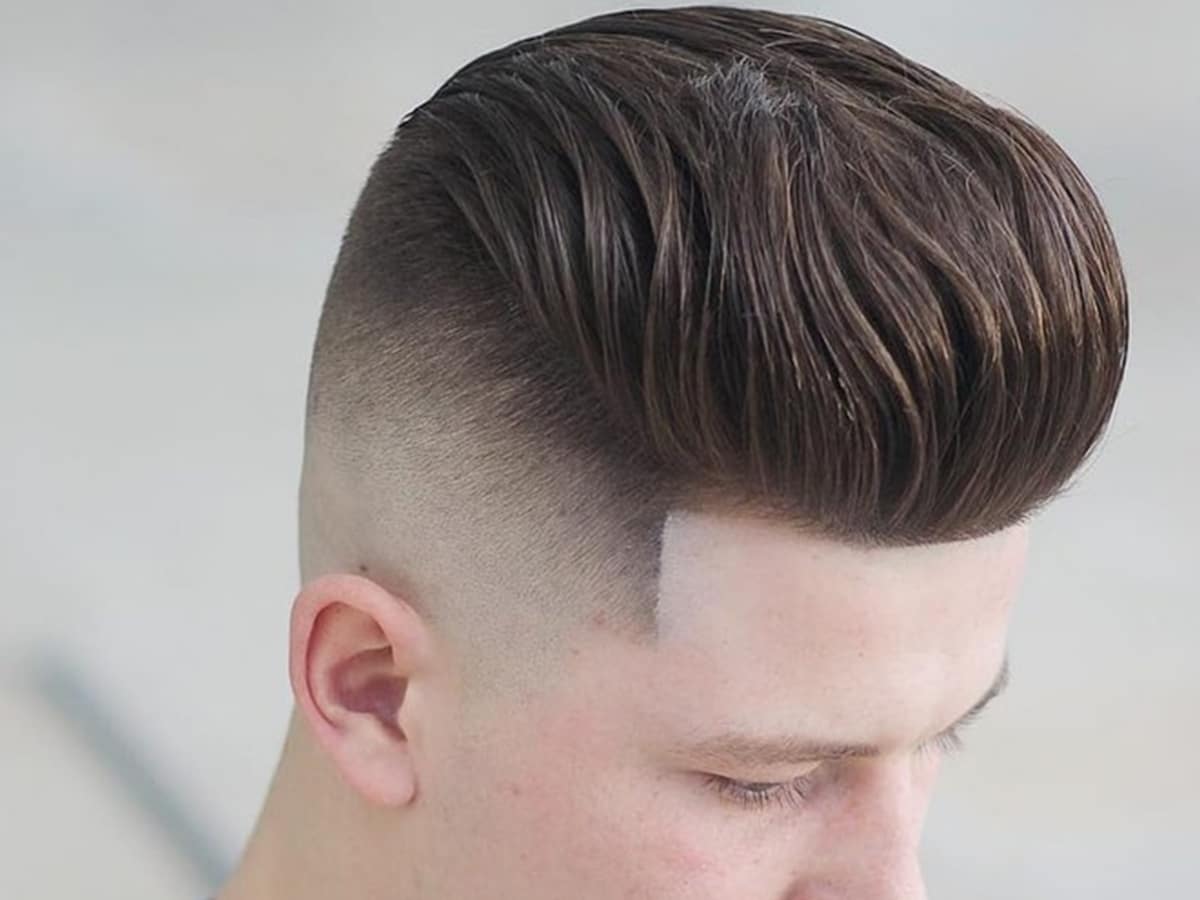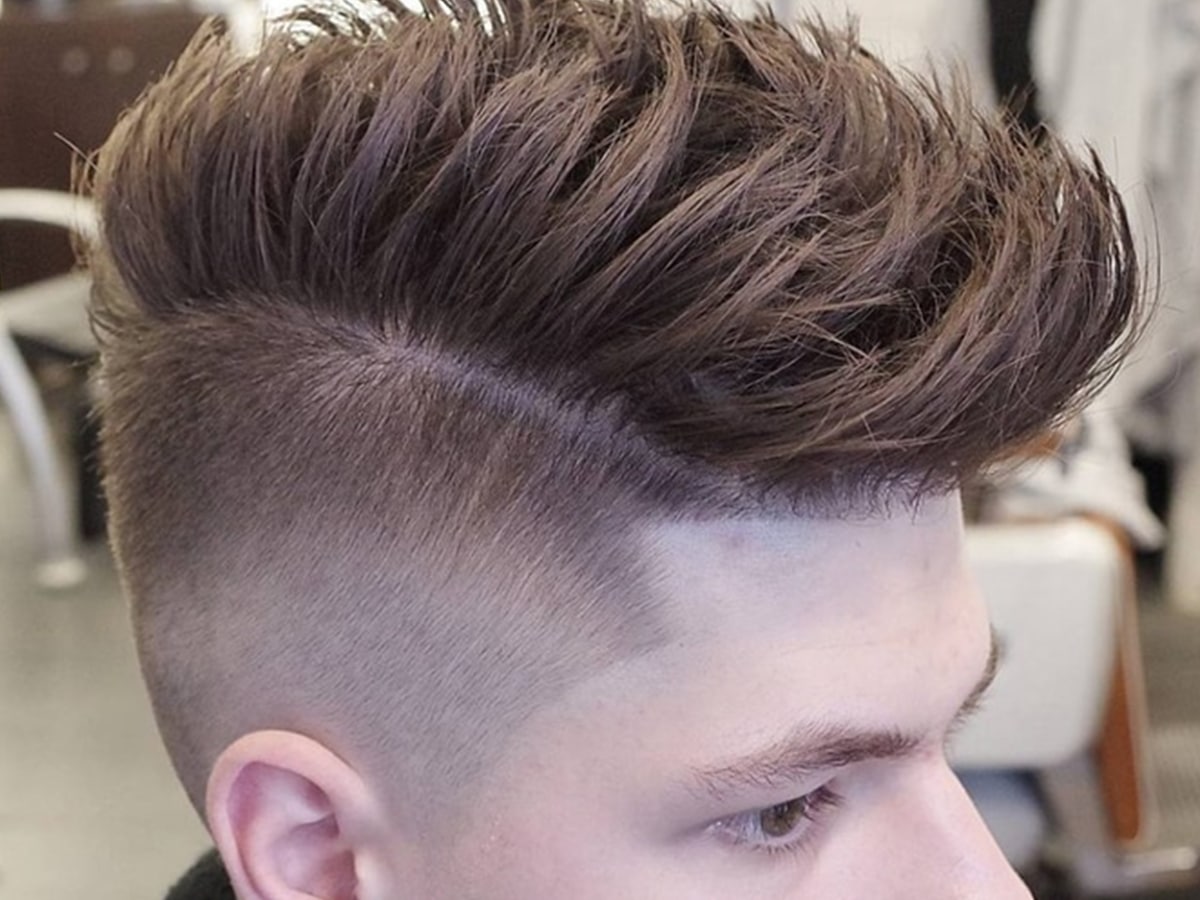Mastering The Textured Pompadour: Your Guide To Modern Hair Style
Detail Author:
- Name : Mrs. Greta Kunde
- Username : zelda35
- Email : runolfsdottir.landen@yahoo.com
- Birthdate : 2006-12-06
- Address : 83429 Fahey Mill North Cindystad, LA 39222
- Phone : +1-360-890-6365
- Company : Emmerich, Bartoletti and Davis
- Job : Construction
- Bio : Saepe maiores ut dolor natus ducimus. Sapiente culpa beatae ut eos dolores eos molestiae. Exercitationem doloremque et et.
Socials
linkedin:
- url : https://linkedin.com/in/shannon3125
- username : shannon3125
- bio : Et numquam sed sint delectus.
- followers : 6160
- following : 907
tiktok:
- url : https://tiktok.com/@hoegers
- username : hoegers
- bio : Quos dolor sit dicta quaerat pariatur et itaque. Dolorem vel quas enim est.
- followers : 2418
- following : 2268
facebook:
- url : https://facebook.com/shannon.hoeger
- username : shannon.hoeger
- bio : Veniam commodi qui esse quisquam id. Ut doloribus inventore quisquam qui.
- followers : 6297
- following : 2466
twitter:
- url : https://twitter.com/shannon1971
- username : shannon1971
- bio : Nobis eveniet quia nostrum et facere et. Consequuntur repudiandae reprehenderit non perferendis est qui. Optio aperiam excepturi modi aut sint sint aut rerum.
- followers : 4441
- following : 562
instagram:
- url : https://instagram.com/shannon_hoeger
- username : shannon_hoeger
- bio : Ut non atque eos ducimus eos maiores totam. Est in in minus et molestias ad rerum.
- followers : 895
- following : 1155
Are you looking for a hairstyle that blends classic cool with a relaxed, contemporary feel? So, the textured pompadour might just be your next favorite look. It's a style that offers plenty of volume and a refined shape, yet it avoids that stiff, overly formal appearance some traditional pompadours can have. This particular cut is all about movement and a natural, touchable quality, which makes it a really popular choice for many folks today.
Unlike its slicker cousins, the textured pompadour embraces a slightly undone, effortless vibe. It brings together the height and swept-back elegance of a classic pompadour with a finish that, quite honestly, feels more lived-in and modern. This approach gives your hair a wonderful sense of character, allowing it to look full and stylish without appearing too "done." It's a look that easily transitions from a casual day out to a more dressed-up evening, too it's almost.
We're going to explore everything you need to know about getting and keeping this fantastic style. From understanding what "textured" truly means for your hair, using insights from Oxford Advanced Learner's Dictionary, to the right products and techniques, we've got you covered. You'll discover how to achieve that perfect blend of volume and playful disarray, that is that, making your hair look its very best.
Table of Contents
- What Exactly is a Textured Pompadour?
- Why the Textured Pompadour is Popular Right Now
- Getting Ready: Preparing Your Hair
- The Art of Styling: Step-by-Step Guide
- Keeping It Looking Good: Maintenance Tips
- Choosing the Right Products for Your Look
- Common Questions About Textured Pompadours
- More Hair Styling Insights
What Exactly is a Textured Pompadour?
When we talk about a "textured" pompadour, we are referring to hair that has a particular kind of surface. It's not smooth or sleek, but rather has a raised pattern, or perhaps feels a bit rough to the touch. This means the hair isn't lying perfectly flat; instead, it shows off its natural movement and individual strands, so.
As per the definitions, texture describes the visual or tactile surface characteristics and appearance of something. For hair, this means it might be curly or slightly wavy, giving it a distinctive physical composition. A textured surface isn't smooth, but has a particular feel, for example, it feels rough, in a way.
This style embraces that non-smooth quality. Instead of a highly polished, almost helmet-like finish, the textured pompadour aims for a more relaxed, natural look. It’s about letting the hair's natural qualities shine through, creating a style that has visual interest and a sense of effortless cool, very.
Why the Textured Pompadour is Popular Right Now
The textured pompadour has really caught on because it offers a fantastic balance. People want styles that look good but don't require hours of fussing. This particular pompadour delivers on that, providing a sharp look that still feels approachable and modern, you know.
It's a style that fits well with today's trends, where a more natural and less rigid appearance is favored. Think about how many people are moving towards looks that highlight individuality rather than strict conformity. This hairstyle, actually, lets your hair breathe and show its true character.
Plus, it's quite versatile. You can dress it up for a formal event or keep it casual for everyday wear, and it always looks appropriate. This adaptability makes it a go-to for many, and it's why you see it so often these days, especially since it's a look that stays fresh, too it's almost.
Getting Ready: Preparing Your Hair
Getting the right foundation for your textured pompadour is just as important as the styling itself. Think of it as preparing a canvas for a painting; you need the right base for the best outcome. A good start makes all the difference in how your hair looks and feels, really.
Washing and Conditioning
Start with clean hair. Use a shampoo that suits your hair type, whether it's oily, dry, or normal. You want to remove any build-up without stripping your hair of its natural oils, which can make it harder to style, so.
Follow up with a conditioner. This helps to keep your hair soft, manageable, and less prone to frizz. A well-conditioned head of hair is easier to work with and will hold its shape better throughout the day, in a way.
Rinse thoroughly to ensure no product residue is left behind. Residue can weigh your hair down and make it look greasy, which is the opposite of what we want for a light, airy textured look, very.
Pre-Styling Products
After washing, gently towel-dry your hair until it's damp, not dripping wet. This is the perfect time to apply a pre-styling product. A sea salt spray or a volumizing mousse can work wonders here, pretty much.
These products add grip, volume, and a bit of hold before you even start drying. They help to create that initial lift and separation that is key to the textured look. Just a small amount, distributed evenly, will do the trick, you know.
A good pre-styler also protects your hair from heat if you're going to use a blow dryer, which you probably will for this style. It's a small step that makes a big difference in the final result, honestly.
The Art of Styling: Step-by-Step Guide
Now comes the fun part: shaping your textured pompadour. This process isn't about perfection, but about creating that deliberate, slightly messy appearance. It's a bit of an art, but with practice, you'll get the hang of it, basically.
Drying for Volume
Grab your blow dryer and a vent brush or your fingers. The goal here is to create lift at the roots. Direct the airflow from the roots upwards, gently pulling your hair in the direction you want the pompadour to go, usually back and slightly up, like your.
Use your brush or fingers to guide the hair. For more texture, try scrunching sections of your hair as you dry them. This helps to enhance any natural waves or curls and prevents the hair from looking too flat, so.
Once your hair is mostly dry but still has a hint of dampness, you can switch to cooler air. This helps to set the volume you've created and locks in the shape. It's a small trick that makes a big impact, too it's almost.
Applying Your Main Product
For a textured pompadour, you want a product that offers hold without making your hair stiff or greasy. Think about a matte clay, a texture paste, or a fiber cream. These products give you control but allow for movement, you know.
Take a small, pea-sized amount of product and warm it up between your palms. Rub your hands together until the product is evenly spread and almost invisible. This ensures a smooth application without clumps, actually.
Work the product through your hair, starting from the back and moving forward. Focus on getting it into the roots for lift, then distribute it through the mid-lengths and ends. Make sure to get it throughout, not just on the surface, honestly.
Shaping and Defining
Now, use your fingers to shape the pompadour. Push the front section of your hair upwards and backwards, creating that signature height. Don't worry about making it perfectly smooth; remember, we're going for texture, right.
Gently pull and separate sections of hair to enhance the textured look. You want individual strands to stand out, giving the style a dynamic and natural feel. This is where the "messy" part of "messy but styled" comes in, pretty much.
Step back and look at your profile in the mirror. Adjust as needed, adding more product to specific areas for extra hold or definition if necessary. The aim is a balanced look with plenty of character, so.
Keeping It Looking Good: Maintenance Tips
A great haircut and proper styling are only part of the equation. Keeping your textured pompadour looking fresh requires a little ongoing care. These simple habits can help maintain your style between visits to the barber, you know.
Regular Trims
To keep the shape of your pompadour, regular trims are important. Depending on how fast your hair grows, a visit to the barber every 3-5 weeks is usually a good idea. This helps maintain the right length on the sides and back, as well as the top, basically.
If the sides get too long, the contrast with the top can be lost, and the pompadour might start to look less defined. Your barber can also help maintain the texture by using techniques like point cutting, which helps create separation, too it's almost.
Don't wait until your hair feels completely out of control. Staying on top of your trims means less drastic changes each time and a consistently sharp look, so.
Nighttime Care
Before bed, you might want to consider how you protect your style. Sleeping on a silk or satin pillowcase can reduce friction, which helps prevent frizz and keeps your hair from getting too matted. This is a simple step that can make a big difference, honestly.
Avoid going to bed with wet hair, as this can lead to awkward kinks and flattened sections. If you need to refresh your style in the morning, a little water or a light mist of sea salt spray can help reactivate the texture, you know.
Some people even lightly tie their hair back with a loose fabric band to keep the general shape, but be careful not to create a crease. The goal is to preserve as much of the volume and texture as possible, right.
Choosing the Right Products for Your Look
The right products are truly essential for achieving and maintaining a great textured pompadour. Different products offer different levels of hold, shine, and, of course, texture. Picking the best ones for your hair type and desired finish is important, basically.
Clay and Pomade Options
For a true textured look, matte finish products are usually your best bet. Clays are fantastic because they offer strong hold with a completely natural, non-shiny finish. They also add a lot of bulk and grip, which is perfect for creating that rugged texture, you know.
Texture pastes are another excellent choice. They typically provide a medium hold and a matte or low-shine finish. Pastes are very versatile, allowing you to rework your hair throughout the day if needed, and they don't feel heavy, so.
While traditional pomades often give a shiny, slick look, there are now many matte finish pomades available. These can offer good hold while still allowing for that desirable textured appearance, so it's worth exploring those options, too it's almost.
Sprays for Hold
After you've applied your main styling product and shaped your pompadour, a light mist of hairspray can help lock everything in place. Look for a flexible hold hairspray that doesn't make your hair feel stiff or crunchy, very.
A texture spray, used before or after your main product, can also boost the textured effect. These sprays are designed to add grit and separation to the hair, making it look fuller and more dynamic, in a way.
Remember, less is often more with sprays. You want to enhance the style, not overpower it. A light, even application will give you the best results, ensuring your textured pompadour stays looking natural and effortless, honestly.
Common Questions About Textured Pompadours
People often have questions when trying out a new hairstyle, and the textured pompadour is no different. Here are some common queries that come up, along with some helpful answers, right.
How often should I wash my hair when styling a textured pompadour?
This really depends on your hair type and how much product you use. Many people find that washing every other day, or even every two to three days, works well. Over-washing can strip natural oils, making hair dry and harder to style, so.
If your hair feels greasy or heavy from product buildup, then it's time for a wash. On non-wash days, you can simply rinse your hair with water to refresh it, or use a dry shampoo to absorb excess oil, you know.
The goal is to keep your hair clean enough to style effectively without drying it out. Listen to what your hair tells you; it's usually pretty good at letting you know when it needs a wash, pretty much.
Can a textured pompadour work for all hair types?
The great news is that a textured pompadour is quite adaptable. It works particularly well for hair that has some natural wave or thickness, as this contributes to the texture and volume, too it's almost.
However, even those with finer or straighter hair can achieve this look with the right haircut and products. Using volumizing pre-stylers and matte clays can help add the necessary body and grip, actually.
The key is communicating with your barber about your hair type and what you're trying to achieve. They can tailor the cut and offer specific product recommendations to help you get the best possible textured pompadour, honestly.
What's the difference between a classic and a textured pompadour?
The main difference lies in the finish and feel. A classic pompadour typically features a very slick, shiny, and highly sculpted look. It often uses oil-based pomades for that high-gloss finish and a rigid hold, so.
A textured pompadour, on the other hand, prioritizes a more natural, slightly undone appearance. It uses products that offer a matte or low-shine finish and allows for more visible individual strands and movement. It's less about perfect smoothness and more about a rugged, modern feel, you know.
Think of it this way: the classic is about sleek precision, while the textured version is about controlled chaos. Both are stylish, but they offer very different vibes, and it just depends on your personal preference, right.
More Hair Styling Insights
Getting your textured pompadour just right can feel like a personal achievement, and it really is. It’s a style that shows off a bit of personality, giving you a fresh and confident appearance. There's a lot to learn about hair, and this is just one amazing option, so.
We hope this guide has given you a clear path to rocking this fantastic look. Remember, practice makes perfect, and experimenting with different products and techniques will help you find what works best for your unique hair. You can learn more about hair styling on our site, and we also have information on this page .


